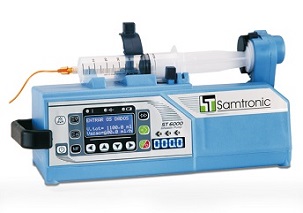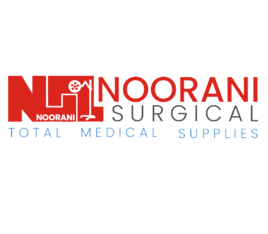An Syringe Pump infuses fluids, medication or nutrients into a patient’s circulatory system. It is generally used intravenously, although subcutaneous, arterial and epidural infusions are occasionally used.
Syringe Pump can administer fluids in ways that would be impractically expensive or unreliable if performed manually by nursing staff. For example, they can administer as little as 0.1 mL per hour injections (too small for a drip), injections every minute, injections with repeated boluses requested by the patient, up to maximum number per hour (e.g. in patient-controlled analgesia), or fluids whose volumes vary by the time of day.
Because they can also produce quite high but controlled pressures, they can inject controlled amounts of fluids subcutaneously (beneath the skin), or epidurally (just within the surface of the central nervous system – a very popular local spinal anesthesia for childbirth).
The user interface of pumps usually requests details on the type of infusion from the technician or nurse that sets them up:
- Continuous infusion usually consists of small pulses of infusion, usually between 500 nanoliters and 10 milliliters, depending on the pump’s design, with the rate of these pulses depending on the programmed infusion speed.
- Intermittent infusion has a “high” infusion rate, alternating with a low programmable infusion rate to keep the cannula open. The timings are programmable. This mode is often used to administer antibiotics, or other drugs that can irritate a blood vessel.
To get the entire dose of antibiotics into the patient, the “volume to be infused” or VTBI must be programmed for at least 30 CCs more than is in the medication bag…or else up to half of the antibiotic will be left in the IV tubing.
- Patient-controlled is infusion on-demand, usually with a preprogrammed ceiling to avoid intoxication. The rate is controlled by a pressure pad or button that can be activated by the patient. It is the method of choice for patient-controlled analgesia (PCA), in which repeated small doses of opioid analgesics are delivered, with the device coded to stop administration before a dose that may cause hazardous respiratory depression is reached.
- Total parenteral nutrition usually requires an infusion curve similar to normal mealtimes.
Some pumps offer modes in which the amounts can be scaled or controlled based on the time of day. This allows for circadian cycles which may be required for certain types of medication.







Reviews
There are no reviews yet.